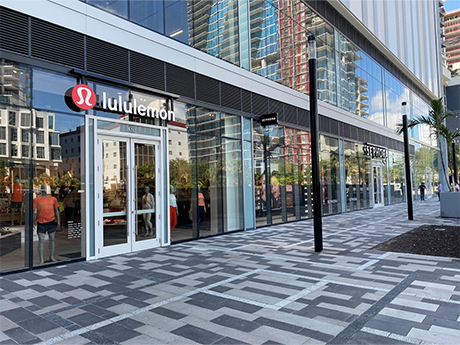The retail sector in South Florida is undergoing adjustments that reflect the region’s dynamic economic landscape and evolving consumer preferences. One notable trend is evident in the restaurant sector, where owners increasingly aim to expand by opening new locations and entering lucrative markets.

This trend is primarily driven by consumer spending, particularly the continual growth of Miami’s tourism industry. Visitors directly inject capital into the local economy, leading to increased disposable income that often circulates back through experiential commerce such as restaurant sales.
A clear indicator of the local market’s strength is the ongoing rise in rental asking rates, significantly surpassing national averages. A robust 4.6 percent upturn in asking rent this year, as reported by CoStar Group, demonstrates retailers’ ability not just to survive but to thrive in a market with elevated asking prices compared to the rest of the state.
This upward trend in rent is accompanied by a low 2.8 percent vacancy rate, according to CoStar data, indicating a competitive landscape where profitable lease opportunities are increasingly scarce for tenants.
The retail sector within the restaurant industry continues to thrive, showing significant activity and heightened interest. The influx of high-net-worth individuals and a post-pandemic resurgence in immigration and travel have bolstered Miami’s tourism and residential consumer spending. This surge in sales, which has driven years of steady retail demand growth, now faces a space shortage that impacts leasing activities.
Remarkably, nearly 95 percent of new construction is leased even before operations begin, according to CoStar. This, coupled with most tenants’ capacity to pay rents reflective of high construction costs, underscores the scarcity of available retail spaces in the South Florida market. Ongoing development projects like the Shops at Botanica in Miami, The Shoppes at Highland in Hialeah and Palm Springs Square by Dacar Management in Miami Gardens are evidence of this supply scarcity, with these developments still under construction.
Recent CoStar data reveals shifting market dynamics in Miami’s retail sector with a decrease in trailing 12-month sales volume from $1.8 billion to $1.2 billion year-over-year. This decline, alongside a sharp rise in leasing prices per square foot, has prompted financially capable tenants to explore ownership options, leading to a noticeable trend favoring owner-user retail spaces.
What sets apart the South Florida retail market is the gap between demand and supply, with demand consistently outstripping supply. This dynamic creates an owner-centric market, granting landlords a distinct advantage.
Despite South Florida’s enduring appeal and attractiveness to national companies, the market has seen a significant decline in leasing volume, likely due to the limited availability of premium retail spaces that feature key attributes like high visibility, favorable co-tenancy and ample parking.
As we progress from the first quarter of 2024, South Florida’s retail real estate landscape remains dynamic and multifaceted. Tenant ownership preferences are on the rise, and demand-supply dynamics continue to evolve, necessitating proactive adjustments by market participants to capitalize on emerging opportunities in this dynamic market environment.
Expectations for leasing activity during the second half of 2024 include continued increases in asking rates due to scarcity of available retail space in Miami. Landlords will continue to apply upward pressure on rents and witness positive results because of the market’s resilience.
The Federal Reserve has recently acknowledged there has been no further progress bringing down inflation to its 2 percent goal. Fed chairman Jerome Powell expressed Fed officials are “prepared to maintain the current target range of federal funds rate for as long as appropriate.” As a result, for the remainder of the year, sales are projected to either remain stable or increase moderately, either due to rising rental rates or because a significant number of loans are maturing.
The staggering rise in interest rates since the pandemic will encourage owners to place their real estate for sale if they cannot find suitable financing alternatives. If inflation starts dropping again, the Federal Reserve is likely to lower interest rates, which will likely stimulate an increase in sales transaction volumes in the first half of 2025, driven by a surge in real estate financing.
— By Valentina Tawil, Commercial Real Estate Broker, NAI Miami | Fort Lauderdale


